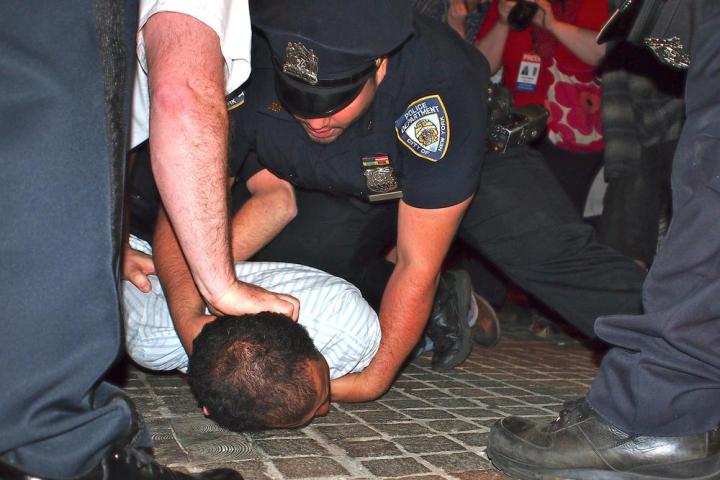
As the dust settles on the New York Police Department’s disastrous effort to connect with locals through a Twitter campaign in which it invited users to send in pictures of everyday folk interacting with cops, the department’s commissioner, Bill Bratton, has stepped into the fray.
Speaking to the Wall Street Journal Wednesday, Bratton said, “Was that particular reaction from some of the police adversaries anticipated? To be quite frank, it was not, but at the same time it’s not going to cause us to change any of our efforts to be very active on social media.”
His comments came after the department’s #myNYPD hashtag went viral Tuesday, with Twitter users posting less-than-flattering images of cops in apparent acts of aggression, some of which were taken during the Occupy Wall Street protests back in 2011 when tensions were running particularly high in parts of the city.
Images like this:
Here the #NYPD engages with its community members, changing hearts and minds one baton at a time. #myNYPD pic.twitter.com/GErbiFFDvY
— Occupy Wall Street (@OccupyWallStNYC) April 22, 2014
Scooters and #myNYPD pic.twitter.com/ImtLm8aQvR
— Adrian Kinloch (@adriankinloch) April 22, 2014
Though clearly it’d been hoping for ones more like this:
Do you have a photo w/ a member of the NYPD? Tweet us & tag it #myNYPD. It may be featured on our Facebook. pic.twitter.com/mE2c3oSmm6
— NYPD NEWS (@NYPDnews) April 22, 2014
For some observers, it’s astonishing that high-profile organizations such as the NYPD are able to get it so wrong with social media campaigns.
Charlton McIlwain, a media professor at New York University, told the Journal the police department’s embarrassing error showed “either a profound misunderstanding of how social media works or a profound misunderstanding about popular perception of the NYPD, or probably both.”
As for Bratton, he seems to have taken the consequences of the misjudged Twitter campaign in his stride, saying he won’t be asking Twitter to remove any of the images. In fact, he’s still encouraging people to get involved in the initiative, though of course wouldn’t mind seeing a few more pictures uploaded to the microblogging site that make his cops look a little more, shall we say, approachable.
The commissioner described most of the images on the #myNYPD feed that show his cops in a negative light as “old news,” adding, “Often times police activities are lawful, but look awful.”
[Image: Daryl Lang / Shutterstock]


